
Yellowstone has an unlimited amount of possibilities for photography. If possible try not to plan too far ahead in terms of what you want to photograph for the day or your trip. Let the type of day help plan your pictures. On those crystal clear days with puffy clouds rolling by, go for overall scenics. On cool sunny mornings go for the steam rising from the Madison or Firehole rivers or the steam filled geyser basins.
Waterfalls – Without question the Grand Canyon of the Yellowstone and its upper and lower falls offers many wonderful picture taking opportunities under all sorts of conditions. The lower falls from Artist Point is one of the most photogenic spots anywhere. Other waterfalls throughout Yellowstone are great places to get beautiful photographs. If you have a tripod, try long exposures of 2 seconds or more to get a silky look to the water.
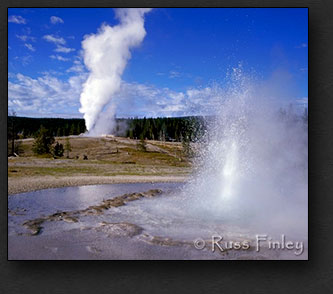
Geysers and Hot Springs – Warm days are best for the geyser basins unless you are trying to get that mood shot with lots of steam. Sometimes too much steam from the geysers takes away from the unique shape of their eruptions. On calm mornings the steam can completely hide the water plume during its eruption. Days with a breeze are best. Try to position yourself so the wind is blowing from either side of the geyser. Never position yourself down wind or you may end up with nothing more than a picture of steam.
Wildlife – You will find more photographers in pursuit of wildlife than anything else in Yellowstone. Few places anywhere offer the opportunities found here. If your camera is not equipped with a telephoto lens then try to get shots of wildlife in their habitat. If an animal is aware of you, you’re too close. Park regulations require that you stay at least 100 yards from bears and at least 25 yards from other large animals. Early mornings offer you the best chance to view and photograph most wildlife in the park.
Where to look for Wildlife
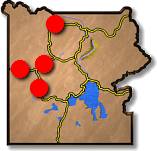
Elk
Some of the best places are along the Madison, Firehole and Gibbon Rivers. The Upper Geyser basin and Hayden and Lamar Valleys are also excellent locations. Elk are often seen in and around the Mammoth Hot Spring area. During the fall rutting season look for these large animals in the Madison and Gibbon meadows and just north and east of Mammoth Hot Springs.

Bison
Bison are almost always on the move and are seen in different areas during different seasons. Probably the best spot is in Hayden Valley along the Yellowstone River. Some other spots are along the Madison, Firehole and Gibbon Rivers. Look for bison in the Fountain Flats area and the Mud Volcano area, as well as in the Lamar Valley. Lone Bulls are often seen around the Lake Hotel and Fishing Bridge.
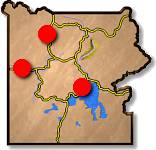
Moose
Look for moose among the willows in Willow Park, just south of Mammoth Hot Springs. Another good area is south of Canyon and the Lake area. On occasion moose can be spotted in the Madison and Firehole rivers. The east side of Lamar Valley is another good choice. Grand Teton National Park is also great for photographing Moose.
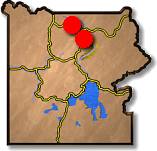
Black Bears
Black Bears can be seen most anywhere in Yellowstone at anytime. They are most often found around the Tower area and in the Blacktail Plateau area between Tower and Mammoth Hot Springs. Lamar Valley is another good viewing area, as are the Madison and Firehole rivers.
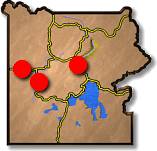
Swans
Look for Swans along the Madison and Firehole Rivers. There is almost always a nesting pair on the Madison. Depending on the time of year watch for cygnets. The Yellowstone River just south of Canyon is another good spot to look for Swans.